Here is a list of the common injuries and conditions we treat. We are adding content for each injury over time and you can see our blog page for information on how we treat other conditions. Feel free to reach out if you have any questions, prior to booking your assessment.
- Hamstring and Adductor strains
- Tendinopathies
- Patello-Femoral Pain or Anterior Knee Pain
- ACL Rehabilitation
- Knee- Meniscus Injuries
- Knee – Ligament Injuries
- Running – over use injuries
- Running – Biomechanical faults and Pain
- Achilles Strains and Ruptures
- Ankle Sprain rehabilitation
- Plantar Fasciitis and Foot Strengthening
- Hip Pain
- Lower Back Pain
- Neck Pain
- Whiplash
- Nerves Injuries – Sciatica
- Nerve Injuries – Pinched Nerves
- Shoulder – instability- dislocation
- Shoulder – Rotator Cuff Tears
- Elbow – Tennis Elbow
- Thumb – De-Quervains
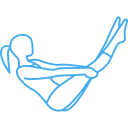
knee Pain
Common Types of Knee Pain
At Pilates 4 Physio we treat all types of knee pain, from sports injuries to more generalized knee pain without a specific cause. The type of knee pain will be determined by clinical tests during your assessment. For sports related injuries, the mechanism of the injury is important.This will tell us what structures in your knee could be damaged. For non-specific types of knee pain, we assess your hip, knee and foot mechanics, as well as strength and flexibility. Some sports related knee injuries will need referral to a sports doctor if we think an MRI is needed. You can still work on the rehabilitation to reduce pain and mobility while waiting for an MRI. For most soft tissue injuries it is essential to start this process in the early stages.
Sports related knee pain
Anterior Cruciate Ligament Tear
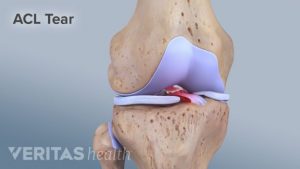 Anterior Cruciate Ligament (ACL) tear is a common injury. In your assessment we can determine if there is an injury to this ligament. Specific clinical tests will determine if you have a torn ligament. This should also be confirmed on an MRI. If so, you should be referred to a sports medicine doctor to decide if you are a candidate for surgery. They will also arrange for you to have an MRI. We can recommend some doctors for you, depending on where you live in Toronto. You can still start to work on regaining your movement and strength before your surgery. This will speed up your recovery pre and post-surgery. There are specific rehabilitation protocols that we follow to progress your joint mobility, strength and return to sport. Typical ACL rehabilitation is 6 months.
Anterior Cruciate Ligament (ACL) tear is a common injury. In your assessment we can determine if there is an injury to this ligament. Specific clinical tests will determine if you have a torn ligament. This should also be confirmed on an MRI. If so, you should be referred to a sports medicine doctor to decide if you are a candidate for surgery. They will also arrange for you to have an MRI. We can recommend some doctors for you, depending on where you live in Toronto. You can still start to work on regaining your movement and strength before your surgery. This will speed up your recovery pre and post-surgery. There are specific rehabilitation protocols that we follow to progress your joint mobility, strength and return to sport. Typical ACL rehabilitation is 6 months.
Meniscus Injuries
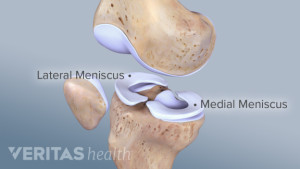 Meniscus injuries are also common in sports. A twisting injury under load may cause the fibrocartilage to tear. In the clinic we can determine how serious this is and if you need to be referred to a Sports Doctor. If your range of motion is not severely restricted, then exercise-based physiotherapy is the normal course of action. The knee will become less painful and stronger as the tear heals. This is a gradual process of re-loading the knee, while respecting pain. The research shows that exercise is just as effective as arthroscopic surgery for minor meniscus tears. Strengthening the knee and hip will help to prevent further wear and tear to the meniscus. It will also protect against it progressing into arthritis. For mild tears, your rehabilitation time is about 3 months.
Meniscus injuries are also common in sports. A twisting injury under load may cause the fibrocartilage to tear. In the clinic we can determine how serious this is and if you need to be referred to a Sports Doctor. If your range of motion is not severely restricted, then exercise-based physiotherapy is the normal course of action. The knee will become less painful and stronger as the tear heals. This is a gradual process of re-loading the knee, while respecting pain. The research shows that exercise is just as effective as arthroscopic surgery for minor meniscus tears. Strengthening the knee and hip will help to prevent further wear and tear to the meniscus. It will also protect against it progressing into arthritis. For mild tears, your rehabilitation time is about 3 months.
Muscles and tendon injuries:
There are a number of different injures that can occur to the muscles that control the knee. Hamstring and quadricep strains are common. Your physiotherapist will determine if you need to be sent for imaging, or to see a sports doctor. For lower grade injuries a gradual rehabilitation program will strengthen the damaged tissues. A common condition we see is hamstring tendon strain. These may be caused by over-stretching the muscle or a sudden pull on the tendon. Tendons take longer to heal than muscle strains but they still need strengthening. Most of the research for muscle and tendon strains show that tissue loading, using progressive strengthening, is the most effective treatment. Unfortunately there are many passive treatments being recommended, such as shockwave and PRP injections, that do not have the science to back them up. Typical rehabilitation times are 3-5 months.
Patella-Femoral Pain
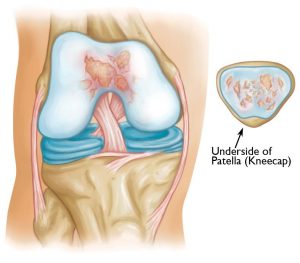 Patello-Femoral pain is one of the most common types of knee pain seen in the physiotherapy clinic. This can be caused by sports activities as well as from non-specific causes. Read our blog on this injury for more detailed information and how we assess and treat it: Patella-Femoral (Knee Cap) Pain.
Patello-Femoral pain is one of the most common types of knee pain seen in the physiotherapy clinic. This can be caused by sports activities as well as from non-specific causes. Read our blog on this injury for more detailed information and how we assess and treat it: Patella-Femoral (Knee Cap) Pain.
Patella-Femoral knee pain is very common. Non-specific causes are related to hip and knee muscle imbalances. There can be imbalances in the quadricep muscle at the front of the thigh. The gluteal muscles, hamstrings and adductors can also be weak. The research points to strengthening the hip and knee and not relying on passive treatments. Each patient will have a different pattern of muscle imbalances and there is no recipe approach.
Non specific types of knee pain
Some knee pain can be described as ‘non-specific’ where there is no direct injury or cause. The pain may have been insidious and may not be related to a specific event. Some of the injuries in the sports section may also arise without a specific event. Meniscus tears can be caused by degeneration as we get older. Arthritis can also arise from general wear and tear on your knee joint. Patella-Femoral (Knee Cap) Pain can occur from just normal activities.
Osteoarthritis
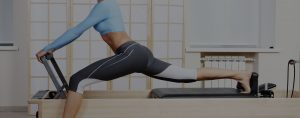 Osteoarthritis is normal wear and tear at the joint surface and lining. In the knee it can occur between the femur and tibia or under the knee cap. The condition is characterized by degeneration of the meniscus, cartilage and lining of the knee joint. The condition can vary from mild to severe. Pain is not always directly related to the degree of arthritis. Some people will have moderate arthritis on an MRI but no pain. The important thing to note is that it does not mean you have to stop your activities or sports. You can manage knee osteoarthritis with therapeutic exercise. A recent study in 2019 showed that therapeutic exercise does not increase damage to cartilage or increase inflammation. Even with severe arthritic knees, aquatic-based exercise programs cam be effective at strengthening the knee and relieving pain.
Osteoarthritis is normal wear and tear at the joint surface and lining. In the knee it can occur between the femur and tibia or under the knee cap. The condition is characterized by degeneration of the meniscus, cartilage and lining of the knee joint. The condition can vary from mild to severe. Pain is not always directly related to the degree of arthritis. Some people will have moderate arthritis on an MRI but no pain. The important thing to note is that it does not mean you have to stop your activities or sports. You can manage knee osteoarthritis with therapeutic exercise. A recent study in 2019 showed that therapeutic exercise does not increase damage to cartilage or increase inflammation. Even with severe arthritic knees, aquatic-based exercise programs cam be effective at strengthening the knee and relieving pain.
Knee Assessment
With these types of knee pain, we look at your biomechanics and strength. You may have muscles that are too short and weak. Your hip and foot muscles may not be strong enough and so your knee joint is taking all the strain. You may also be performing some exercises incorrectly with improper technique. A simple correction can make a huge difference in how you load your knee. The Pilates equipment is ideal for gradual hip and knee strengthening. It allows numerous adaptations to avoid flaring the joint. Hip, knee and foot strengthening are essential to prevent over-loading the knee. We also strengthen your trunk muscles to protect the knee. Weakness in the hip and knee muscles can cause torque and hyper-extension at the knee joint.
Physiotherapy and Pilates Treatment
Your assessment will show us the underlying cause of your condition. We assess your strength and flexibility by observing you performing key exercises. The Pilates Reformer is ideal for foot, hip and knee rehabilitation. Exercises can be performed lying on your back, side-lying and standing. You can also do supported lunges to build-up the strength and technique without pain. The overall goal is to program the exercises into functional movements that you do in normal activities. Squat, lunges, stepping-up and down can all be adapted on the Pilates equipment. We also have mini-trampolines to get you back to jumping in sports.
At Pilates 4 Physio we have a full complement of equipment for effective knee rehabilitation. The design of the Pilates equipment allows us to work with the most acute injury through to the advanced stages of the rehabilitation process. The goal is it get you back to the activities and sports you enjoy!
